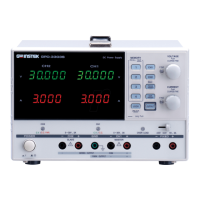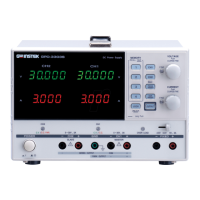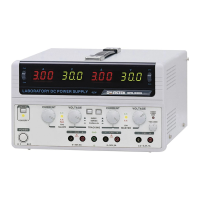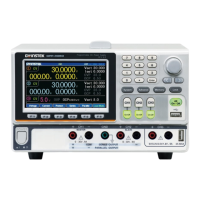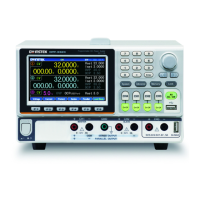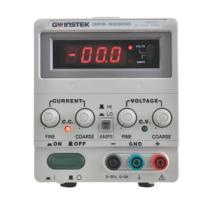
Do you have a question about the GW Instek GPD-4303S and is the answer not in the manual?
| Model | GPD-4303S |
|---|---|
| Power Rating | 90 W |
| Number of Outputs | 3 |
| Display Type | LCD |
| Voltage Resolution | 10 mV |
| Current Resolution | 1 mA |
| Protections | OVP, OCP, OTP |
| Over Voltage Protection | Yes |
| Over Current Protection | Yes |
| Type | Programmable DC Power Supply |
| Output Current | 0 to 3 A |
| Output Channels | 3 |
| Ripple & Noise (CV) | ≤1mVrms |
| Ripple & Noise (CC) | < 3mArms |
| Interface | USB, RS-232 |
| Operating Temperature | 0 to 40 °C |
| Storage Temperature | -20 to 70 °C |
Provides essential guidelines for safe operation, handling, and maintenance of the GPD-X303S series.
Explains the different output modes (independent, series, parallel) and CV/CC operating principles.
Lists the main features, performance, operation, protection, and interface specifications of the GPD-X303S series.
Details the function and operation of control panel elements like Memory Keys, Channel Selectors, Parallel/Series Keys, Lock Key, and Output Key.
Details the USB connector, cooling fan, power cord/fuse socket, and AC selector on the rear panel.
Guides the user through the essential steps for powering up the GPD-X303S series, including AC voltage selection and connection.
Explains how to control the output state (on/off) and manage the beep sound settings for panel operations and list of beep events.
Describes how to operate CH1 and CH2 independently, including connection and output rating.
Details setting voltage and current for CH1/CH2 in independent mode, including coarse/fine control and turning output on.
Explains the fixed/variable rating of CH3, its lack of tracking modes, and how to connect the load.
Details the CH4 rating, its lack of tracking modes, and the procedure for connecting the load and setting voltage/current.
Explains how to store front panel settings into one of the four internal memories, including what settings are saved.
Guides on how to recall previously saved panel settings from the internal memories, noting output behavior.
Describes how to set up remote control via USB, including COM port settings and functionality check commands.
Lists output ratings, voltage regulation specifications, ripple & noise, and temperature coefficient.
Details current regulation, tracking operation specifications, meter resolution, dimensions, weight, and USB cable options.

